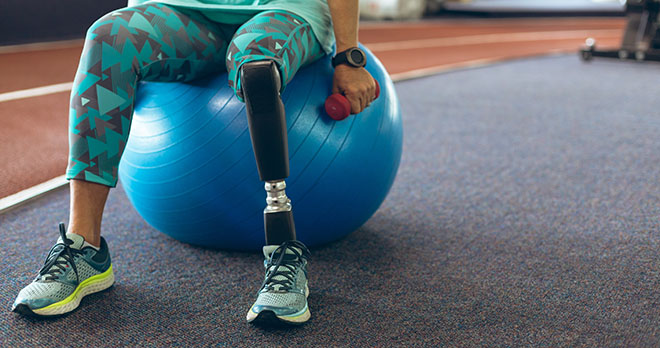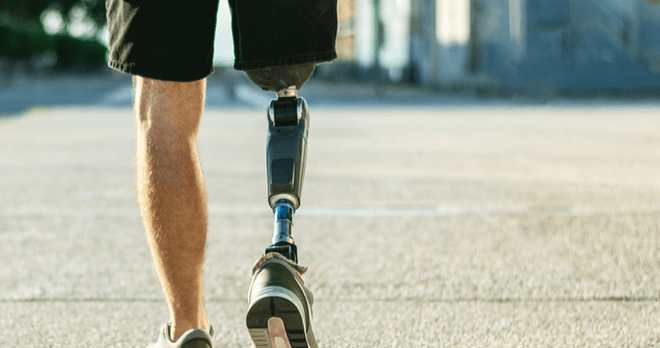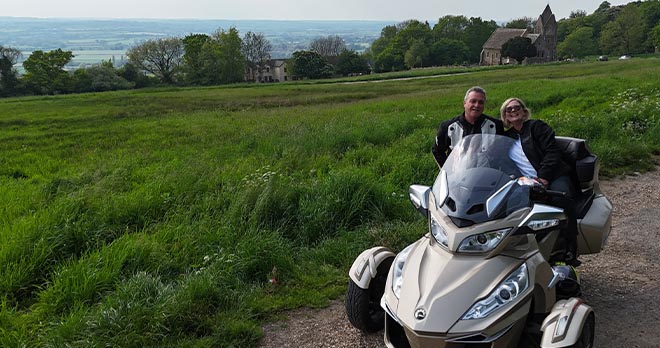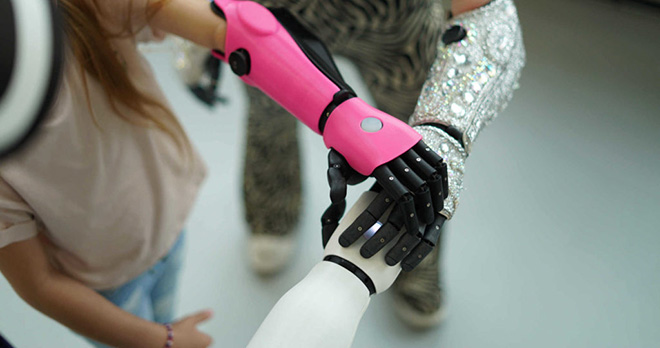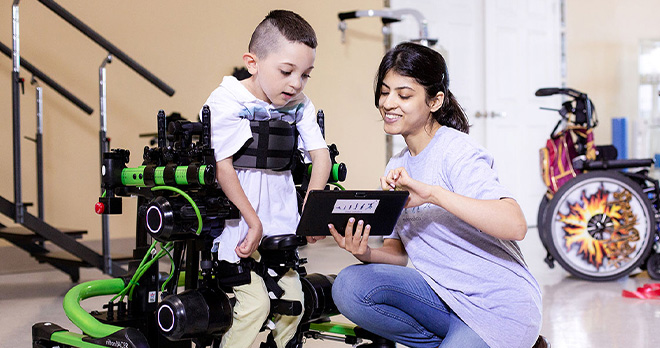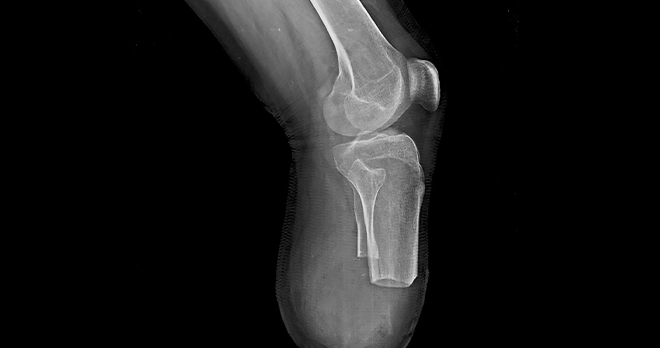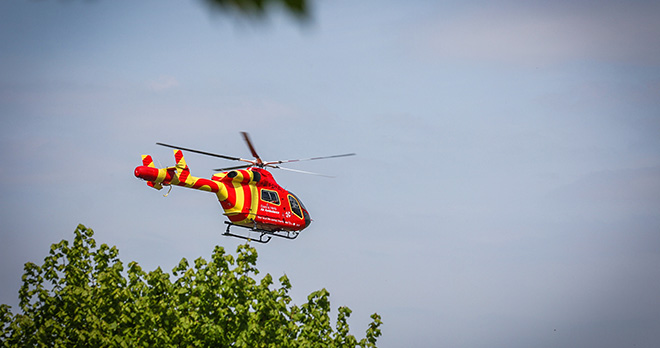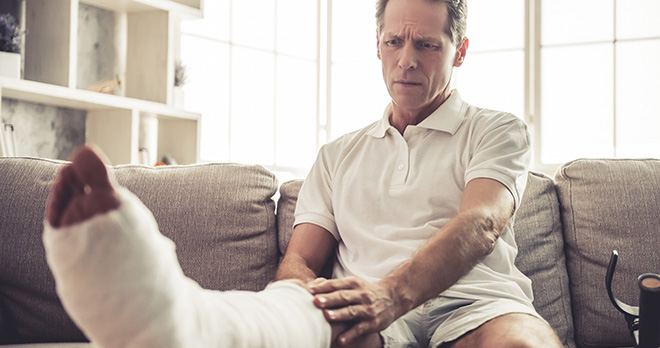The removal of the entire limb and partial removal of the pelvis.
What you need to know after amputation
Our specialist team has put together this guide of all the information you need to know after limb loss.
In this guide to amputations
Types of amputation
Amputation refers to the removal of a limb or part thereof. Usually amputation is a surgical measure used to control pain or disease process in the affected limb such as infection, though in some cases an amputation is carried out on individuals as preventative surgery. Amputation should only be considered if the limb is non-viable or non-functional.
Appropriate amputation surgery can successfully remove a dysfunctional or painful limb and can reduce further threat to health, for example from gangrene, ischemia or infection. In many cases it can also allow effective rehabilitation using a prosthetic limb in order to restore function.
Ranging from removal of part of a finger to removal of the entire arm and part of the shoulder.
Removal of fingertips and other parts of the fingers.
Removal of the entire hand but excluding the wrist.
Removal of the hand and the wrist joint.
Partial removal of the forearm below the elbow joint.
Removal of the entirety of the forearm at the elbow.
Removal of the arm above the elbow.
Removal of the entire arm including the shoulder blade and collarbone.
Ranging from removal of a single toe to the removal of the entire leg and part of the pelvis.
The removal of one or more toes.
Amputation of the foot at the ankle
Amputation of the leg below the knee but retaining the knee joint.
Removal of the lower leg and knee joint.
Amputation of the leg above the knee joint.
Removal of the entire limb up to and including the femur.
Life after limb loss: rehabilitation
An amputation can be a very significant procedure and you will likely require a multidisciplinary team of healthcare professionals throughout the process. Each individual will be different in terms of the surgery undertaken and their objectives for rehabilitation. There is no ‘one size fits all’ but this list sets out the key professionals who you may work with as part of your rehabilitation journey.
Usually, the clinical specialist in charge is a consultant in rehabilitation medicine and a specialist in prosthetics. This consultant will usually lead the multidisciplinary team (set out further below) to provide a programme of carefully coordinated rehabilitation services tailored around the needs of the amputee.
A rehabilitation consultant will work closely with the orthopaedic surgeons in advance of the operation taking place and will help prepare for the support that will be needed afterwards.
A prosthetist is a specialist in prosthetics, i.e. the artificial limb/device that replaces a missing body part. Prostheses are intended to restore normal functions of a missing body part as far as possible.
A prosthetist will be crucial to assessing your suitability for using a prosthetic and the specific type/size that may be appropriate. Successful use of a prosthetic often involves many appointments and trials to ensure an optimal fit in order to maximise comfort and function.
The physiotherapist’s role is to plan and implement a treatment programme with the aim of restoring function and independence. A tailored plan will be devised around your specific circumstances.
Where a prosthetic is being explored, the physiotherapist will work closely with the prosthetist to prepare you for a prosthetic and to support you once it has been prepared. For some amputees, they feel they have greater independence using a wheelchair than a prosthetic. Again, a physiotherapist will tailor the exercise programme around the individual’s needs and preferences.
Occupational therapists are instrumental in helping you return to independent living as far as possible and to support you in doing activities that matter to you. Typical activities that an OT may assist with are as follows:
- Adapting ways of getting dressed safely and advising on suitable clothing.
- Increasing independence in personal care activities such as washing, getting in and out of the bath and using the toilet.
- Regaining independence in the kitchen to prepare drinks and meals.
- Using a wheelchair safely and effectively.
There can be a wide range of tasks that an OT can help with in addition to those listed above, such as advice on driving, returning to hobbies after limbs loss, developing new interests, etc.
Plastic surgeons are often at the very heart of the reconstructive process, working to repair missing or damaged tissue and skin, and restoring function or appearance as far as possible.
- Osseointegration refers to use of a metal implant being inserted into living bone and becoming chemically bonded to that bone over time. This allows the metal implant to be used for direct fixation of a prosthesis to the residual skeleton in the amputation stump of a patient.
- Targeted muscle reinnervation (TMR) is a surgical technique for re-directing the nerve impulses in the amputation stump of a patient, with the intention of treating nerve-related pain and to improve the ability of a patient to control a prosthesis.
Prosthetics – a guide to choosing, fitting and styling the right one for you
Ensuring that a prosthesis is correctly fitted and suitable for the individual is crucial to restoring independence and ensuring that amputees can complete day-to-day tasks, whatever they may be. Taking the time to speak with specialists in order to understand how the prosthesis is fitted, and why certain options may be best for certain individuals is crucial in achieving independence.
Choosing a prosthetic – types available for different things
As an arm amputee, the choice of the type of artificial limb is centred around whether the limbs need to be passive or more functional. Passive arms do not have the ability to grasp items. However they can be much more aesthetically appealing than more functional arms.
A functional arm is normally either body-powered or it is electric (often myoelectric). Cable operated hands and hooks are known as body-powered. These are operated by using a cable and harness system. By incorporating the back and shoulder muscles, a cable is pulled and this will either open or close the hand.
A myoelectric limb functions by picking up impulses from the muscles and feeding these to electrodes, from the amputee’s residual limb. These impulses are then translated by the prosthesis and the artificial hand can correspondingly open or close.
Less common than myoelectric arms, but still used today, are electric arms, which can function by turning a switch on or off. The hand will then either open or close.
As a leg amputee, you may be fitted with either one of two types of limb.
The first potential is an exoskeletal prosthesis. This has a hard outer shell made primarily of plastics and laminates. For the exoskeletal limb, he strength derives from the outer lamination and the shape of the cosmetic itself. Typically exoskeletal limbs are very durable; however the weight of the prosthesis is often heavier than an endoskeletal design.
Endoskeletal, or modular prosthesis, have a tube or pylon frame that acts as if it were a skeleton. This pylon will be internal to the artificial limb. Normally these will have a soft foam cover over the prosthesis, which is shaped to more accurately replicate the look of the missing limb. These are normally lighter weight, for example aluminium or titanium, and will often have interchangeable fixtures such as knees and feet.
Trialing / Fittings
Once an amputee’s residual limb has healed and the swelling has reduced, they will be ready for the fitting of their first artificial limb.
As an arm amputee, wearing a t-shirt to their first fitting will make the process easier. Likewise, if they are a leg amputee then they should wear shorts, and bring a complete pair of shoes to ensure that the artificial limb fits their shoes.
Depending on the amputee’s situation they may first of all be fitted with a temporary artificial limb. Before this happens the clinical team will ensure that the residual limb has fully healed. The benefit of a temporary limb is that it allows the amputee to get used to the addition to their body. As a leg amputee, the temporary fixture will also give the individual a chance to learn to walk.
A leg amputee may be fitted with a passive prosthesis as a first limb – this will have no grip function. The benefit of the fitting is that it will let the amputee adjust to the additional weight, and it will help with balance.
The amputee may wish to wear the fitting for short burst throughout the day, when they first receive it. They can then gradually increase their time that they wear it for. Physiotherapy exercises will be important in strengthening their residual limb, and this in turn will allow them to wear the limb for longer periods.
It is key when having additional limbs fitted that the amputee considers how and when the artificial limb will be used. For example if they live an active life, it may not be conducive for them to have a more aesthetically pleasing acritical fitting, which is not very functional. Discussions about these types of issues should be brought up with the prosthetist, so that the best decision can be made.
Cosmetic vs functional
There is a balance to be struck between the cosmetic look of the prosthetic limb, and how functional it is. For example, a leg amputee who leads an active life may not prioritise a highly detailed cosmetic covering. This is because it can be incredibly expensive and may be weaker and more susceptible to damage.
As an arm amputee, hooks can be very useful because of their natural pinch or grasp function. However they are not as natural in appearance when compared with a passive or myoelectric hand.
Amputees can also have specific artificial limbs made for certain activities. For example an arm amputee who is an avid cyclist, may have a simple ring attached to the handlebars of their bike, which they may then use whenever they cycle.
Amputation resources and contacts
This portion of the guide provides you with information you may use in order to contact a number of support groups and teams dedicated to aiding amputees and families of amputees.
Charities
The leading limb-loss charity in the UK; the Limbless Association provides information and support to the limb-loss community with the aim of supporting people of all ages.
Tel: 0800 644 0185
Twitter: @limblessassoc
Facebook: Limbless Association
An organisation with a wide range of support networks across the UK. The Amputation Foundation can be the first point of contact for those who have recently suffered the loss of one or more limbs, with the intention to get that individual the support most tailored to their needs.
Tel: 01744 808 850
Twitter: @AF_amputation
Facebook: Amputation Foundation
The Douglas Bader Foundation looks to advance and promote the physical, mental and spiritual welfare of persons who are either born without or have lost one or more of their limbs.
Tel: 01225 865172
Twitter: @DouglasBaderFou
Facebook: The Douglas Bader Foundation
The only UK charity that supports limbless veterans of the Armed Forces. BLESMA helps both ex-serving and serving members of the military to rebuild their lives with rehabilitation activities and welfare support.
Tel: 020 8590 1124
Twitter: @BLESMA
Facebook: Blesma
Youtube: https://www.youtube.com/user/BLESMA1932
Instagram: https://www.instagram.com/blesma
Steps aims to provide support for children and their families, when a child has suffered the loss of a lower limb. They achieve this in a number of ways, including emotional support through the Steps helpline and informing families through their booklets and online resources.
(NB all lower limb conditions, not just limb loss)
Tel: 01925 750271
Twitter: @STEPS_Charity
Facebook: @Stepscharity.org.uk
Finding Your Feet support families affected by amputation or limb difference, through a range of sporting initiatives and social inclusion projects.
Tel: 0141 258 4868
Twitter: @fyf_charity
Facebook: @Findingyourfeetcharity
Limbcare UK aims to create independence for amputees through counselling, fitness, sport, dance and music. The charity also offers an education on the subject for any amputees across the country.
Tel: 0800 052 1174
Twitter @LimbcareUK
Facebook @LimbcareUK
Limb Power was created to engage amputees in physical activity, sport and the arts with the intention of improving their quality of life and lifelong rehabilitation. The charity is now a National Disability Sports Organisation.
Tel: 07502 276858
Email: [email protected]
Steelbones works to connect the amputees community by providing extensive proactive support networks. The charity takes these opportunities to share news on stump health, promote healthy lifestyles for amputees, and to signpost useful services.
Tel: 01223 734 000
Twitter: @SteelbonesUK
Facebook: Steel Bones UK
With local branches throughout the UK, Reach aims to connect families in order to build relationships between amputees and their families. They have seen success in doing this, whether it is at their family weekends, branch meetings or on their Facebook forum.
Tel: 0203 478 0100
Twitter @ReachCharity
Facebook @ReachCharity
Email: [email protected]
Additional contacts and sources of information
PACE aims to provide multi-disciplinary services to individuals who have sustained limb loss, in order to optimise function, mobility, and body image.
Twitter: @PACErehab
Dorset Orthopaedics is an independent provider of prosthetic, orthotic, silicone and rehabilitation services, who pride themselves providing tailored services for each individual client.
Twitter: @DorsetOrtho
Facebook: @Dorset.ortho
A world leading manufacturer and supplier for prosthetic limbs, as well as orthotic supports and wheelchairs; all with the aim of facilitating independence.
Twitter: @Ottobockhq_eng
Facebook: Ottobockuk
Bionics company developing affordable, assistive devices for amputees.
Twitter: @Openbionics
Facebook: @Openbionics
Youtube: https://www.youtube.com/channel/UCcjAyHEHlN5wKYcOPyk4mOw
With access to a wide range of prosthetic products, the London Prosthetic Centre is able to offer clients a great choice of prosthetic limbs.
Twitter: @LPCProsthetics
Amputation – a glossary of terms
Abduction – Angling part of the body / prosthesis away from the body’s midline
Adduction – Angling part of the body / prosthesis towards the body’s midline
AFO (Ankle Foot Orthosis) – a brace that supports or controls the ankle
Alignment – The way the prosthesis is set up. This is concerned mainly with the angle of the socket and foot
Amputation – the loss or absence of all or part of a limb
Ankle disarticulation – Usually called a Symes amputation involving amputation through the ankle joint
Assistive equipment – Devices that assist in performance or mobility; for example ramps or bars, changes in furniture or other objects heights, environmental control units and specifically designed devices
Atrophy – When a muscle reduces in size through reduced use
Bilateral – Double amputation of both upper or lower limbs
Bionics – The application of engineering or mechanical principles to biological systems such as the human body
Bumper – A part installed into a prosthetic component to aid extension or resistance or to soften impact at the end of a range of motion.
Check socket – A temporary socket intended to test the fit and alignment of a prosthesis prior to a permanent prosthesis being made
Cosmesis – A cosmetic cover for the mechanical elements of prosthesis
Congenital limb deficiency – Absence of part or all of a limb at birth
Cover – Also referred to as the anatomical form, cosmesis or finish – this is the external shape and surface detail of prosthesis. The cover may be incredibly high definition and life-like, or it can be a basic anatomical shape
Digital amputation – Toe or finger amputation
Dorsiflexion – resultant posture of the foot when the toes are pulling up
Donning – Putting on a prosthesis or orthosis
Durometer – Evaluation of the hardness a material used as part of the Cover. Normally referring to polymers, elastomers or rubbers
Dynamic foot – A type of prosthetic foot that stores and releases walking energy to more realistically replicate the action of a natural foot to promote walking action – also referred to as an Energy Storing Foot
Endoskeletal prosthesis – Prosthetic device whereby the support offered to the body is internal, much like the human skeleton
Exoskeletal prosthesis – Prosthetic device whereby the support offered to the body is external
Femur – Thigh bone
Fibula – The thinner of the two bones in the shin.
Forequarter amputation – Amputation removing part of shoulder and the arm
Gait analysis – A review of a person’s walking pattern, especially when wearing a prosthesis
Hemipelvectomy – Amputation of the leg involving removal of part of the pelvis with the limb. This is also called a hindquarter amputation
Hip disarticulation – Amputation of the leg through the hip joint
Ischial tuberosity – A thick part of the pelvis in the buttocks, used to take weight in above knee prosthesis. The ischium (commonly called the sitting bone)
Knee disarticulation – Amputation through the knee joint
Liner – A removable sleeve that fits over the stump/residual limb. The Liner acts as a cushion and interface with the socket of the prosthesis.
Multiaxial foot – Prosthetic foot imitating ankle movement, and allowing better control and balance on uneven ground
Neuroma – Fibrous tissue around the end of a severed nerve
Oedema – When a body part suffers welling or produces excess fluid
Osseointegration – a direct connection between living bone and a load-bearing artificial implant, which has structural and functional benefits
Partial Foot – amputation where only part of the foot is removed
Patella – Kneecap
Patella tendon – A thick tendon between the kneecap and the top of the shin which takes weight well so is often used for support in below knee prostheses
Pylon – The pole in the prosthesis that gives it height
Plantarflexion – resultant posture of the foot where the toes point down
Phantom pain – Pain or discomfort in the absent limb after undergoing an amputation
Phantom sensation – Sensory awareness of the part of an amputated limb that is no longer present
Pistoning – The movement of the socket relative to the residual limb as a result of poor fit
Prosthesis – An artificial limb worn following amputation of a body part, either for cosmetic or functional
Prosthetist – A professional specialising in the design and fitting of artificial limbs
Patella tendon bearing (PTB) – a type of below knee prosthesis in which much of the weight is taken on the patella-tendon
Residual limb – an alternative way of describing the stump formed following part amputation of a limb
Rigid dressing – A hard fibreglass cover used to protect the stump and normally fitted shortly after the amputation
Sach Foot – A lightweight prosthetic foot that has a fixed ankle
Shoulder disarticulation – Amputation at the shoulder joint
Shrinker – A compression sock specifically for stumps that controls swelling after amputation surgery
Silicon/gel liner – A rubbery synthetic liner material that rolls onto the stump
Silicon suspension (SSS) – A gel liner that engages in a lock inside the prosthesis in order to aid suspension
Sleeve suspension – A sleeve that is rolled over a below the knee prosthesis and onto the thigh for suspension
Stump volume – the phrase referring to the size of the stump in relation to the socket of the prosthesis
Socket – The portion of the prosthesis that is custom made to accommodate the amputee’s residual limb
Socket relief – The space/void created in a prosthetic socket in order to reduce pressure over sensitive areas of the stump
Stump sock – A liner made specifically for stumps
Suspension – How the prosthesis is held on
Supracondylar prosthesis (PTS) – Similar to PTB but comes in and over the knee to hold it on
Symes amputation – Amputation of the foot through the ankle joint
Transmetatarsal-phalangeal amputation (TMP) – Amputation of the toes through the ball of the foot
Transmetatarsal amputation (TMT) – Amputation of the toes to just behind the ball of the foot
Transfemoral – An above knee amputation. Also referred to as an AK (above the knee) amputation
Transhumeral – An above elbow amputation
Transtibial – A below the knee amputation, also referred to as a ‘BK’ amputation
Transradial – A below the elbow amputation
Tibia – The larger of the two bones in the shin.
Ulcer – A lesion or opening of the skin
Unilateral – Affecting only one side
Volume loss – A description of the change in stump shape/size that can potentially lead to in an ill fitting prosthesis
Volume changes – Fluctuation in the size and shape of the stump, related to body fluid levels and caused by changes in the weather, health etc
Wrist disarticulation – Amputation through the wrist joint






